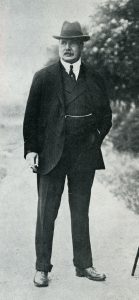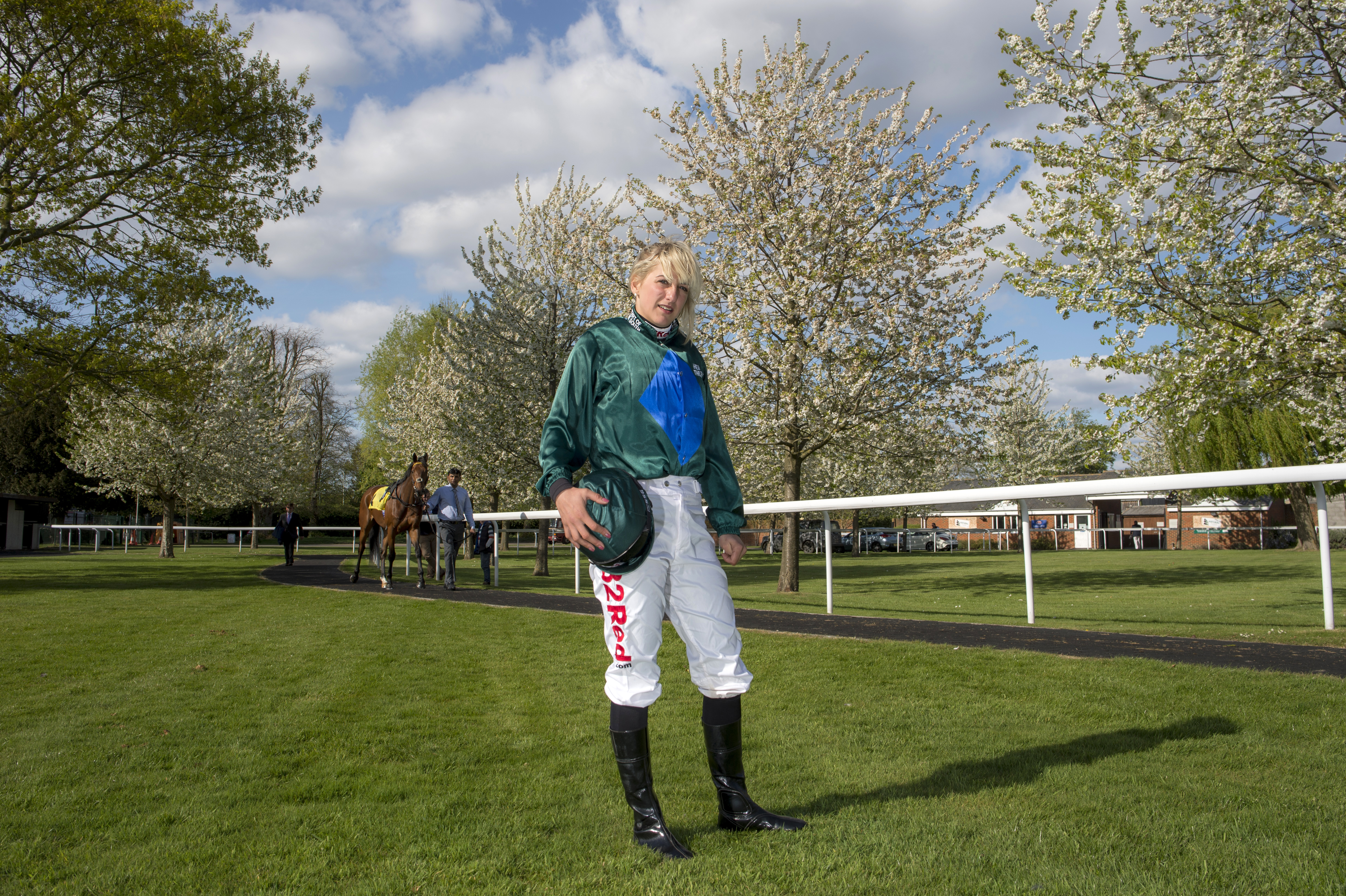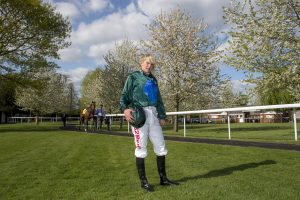The Thoroughbred Breeders’ Association, which celebrates its centenary this month, was founded as a result of the special circumstances that prevailed within racing in the dark days of World War I.
Great Britain had declared war on Germany on August 4, 1914, a day on which meetings were scheduled, and duly took place, at Birmingham, Brighton and Ripon. Perhaps because many were taken in by the optimistic suggestion that it would ‘all be over by Christmas,’ there was no interruption to the schedule in the six weeks that followed.
Racing was not alone in apparently carrying on regardless; the Football League authorities saw no need to amend the full programme of fixtures scheduled in their new season.
But the confidence and complacency expressed by that approach was not shared universally. While young men in their thousands were joining up to fight for their king and country, many felt that sport’s governing bodies were choosing to ignore the serious threats that war imposed; with the nation in peril, was it right that such trivial pursuits should be indulged? In some quarters, disapproval reached the level of outrage.
Racing had to react to the criticisms. The Stewards of the Jockey Club – Henry Greer, Lord Wolverton and Lord Villiers – called all members to a special meeting on September 16 to discuss the crisis.
The position they adopted was to recommend that racing should continue, and they proposed to allay the concerns of the antis by arguing that their stance had nothing to do with providing a spectacle and betting opportunities for the public, but instead recognised that a cessation of racing would throw thousands out of work and would be damaging to the nation’s breeding industry.
After the ensuing debate, the motion put to members proposed that the fixtures scheduled at Newmarket and elsewhere should stand as arranged, where the local conditions permitted, and the feeling in the local community was not averse to the meeting being staged. The membership swallowed that whole; the motion was carried unanimously.
It might seem extraordinary now that there was not a single dissenting voice, but that was par for the course in the Jockey Club of that period – arrogant, authoritarian, and so confident of its long-established supreme powers that it expected its pronouncements to be accepted without question.

Lord Derby was Secretary of State for War
Few members would have imagined that in this case many would charge the Club with having acted irresponsibly and with flagrant insensitivity, its message being interpreted as an indication that the privileged classes intended to do as they liked, regardless of the circumstances.
Of course, the war was not all over by Christmas. In the early spring of 1915 Lord Kitchener intensified his recruitment drive for the armed forces, making special reference to football and racing, sports involving men who should be serving their nation at the front. He was unequivocal where racing was concerned: it should cease for the duration of the war, and its workforce diverted to roles more in the national interest.
Kitchener’s views were widely supported by the general public, prompting the Stewards of the Jockey Club to call another special meeting for March 16. On that occasion it became clear that some members had now acquired doubts, but when the vote was taken a clear majority remained in favour of standing by the resolution passed six months earlier. The Club’s intransigence had the inevitable effect of stiffening the resolve of the antis, and parliament was urged to take action.
In May the subject was debated in the House of Commons, and from all sides there came condemnation of the racing authorities. Shortly afterwards the President of the Board of Trade wrote to the Stewards of the Jockey Club in terms that might now seem surprising: there was a need to keep the whole of the railway system free from congestion for the rapid and unimpeded transit of troops and munitions, so “all race meetings should be suspended for the duration of the war, except at Newmarket, the peculiar circumstances of which, dependent as they are entirely on racing, combine to make this exception expedient.”
The government scarcely needed an excuse for imposing a ban that would be widely supported throughout the country, but here it was evidently anxious not to upset the Jockey Club too much, and seemingly apologising for the inconvenience its decision would cause.
The Stewards were bound to comply, though they probably felt it was hard to acknowledge the existence of a higher authority than the Jockey Club. After the fixture at Windsor on May 22, only Newmarket staged racing in England in 1915, the revised schedule including substitute versions of the Epsom and Doncaster Classics.
Football was subject to similar restrictions, the professional game being suspended after Everton claimed the League title and Sheffield United beat Chelsea 3-0 in the FA Cup Final. That sport would see no resumption until the start of the 1919-20 season.
Racing never suffered a total ban, and in 1916 there was even some relaxation of the partial ban.
Newmarket again had its full quota of fixtures, but neither the War Office nor the railway companies objected to the staging of a limited number of meetings at Gatwick, Lingfield Park, Newbury and Windsor. Those courses hosted 24 days between them.
A letter from the President of the Board of Trade to the Stewards of the Jockey Club in February 1917 offered assurance of something similar for racing in the coming season. It confirmed that the same number of Newmarket fixtures would be permitted, while leaving open the question of meetings at other courses; that would remain in abeyance for a while. At least there was nothing obviously negative in the message.
However, there was negativity to come soon enough, and the complacent Stewards, who were now Lord Jersey (the former Lord Villiers), Sir John Thursby and Arthur James (shortly to be replaced by Lord Penrhyn), made a hash of trying to deal with the situation. An anonymous letter to The Times from someone calling himself ‘Horse Lover’ expressed the view that horseracing was not essential for the maintenance of the breed; the notion that it was he regarded as absurd.
His remark that cart horse and shire horse breeding thrived without racing seemed hardly relevant, and the first response from inside the Jockey Club was to criticise the editor of The Times for his folly in allowing the publication of such nonsense.
But there was an unwelcome sequel to the nonsense. The opposition to racing in wartime suddenly became a feature in The Times correspondence columns, the anti brigade renewing their attacks with more vigour and intensity. It was scandalous that racehorses, a luxury commodity, had a ready supply of feed while there was an urgent need for oats to sustain the stock who were actively engaged in trying to win the war.
Was it not obvious where priorities should lie? Every succeeding letter helped to build a case against racing. The Jockey Club had failed to appreciate the influence that The Times could have; it had come up against another institution that could exercise more clout, and it was losing the argument.
Less than three months after the government had sanctioned a programme for racing throughout the year, there came a complete U-turn, plainly determined by the views reflected in the correspondence columns of The Times. There was no apology for inconvenience caused this time.
The blunt statement decreed: “It was decided that public opinion, which was shared by members of the Cabinet, was opposed to racing at the present moment, and it was therefore advisable, for that reason, and in view of the fact that severe restrictions would be placed on the provision of oats, that after the Newmarket First Spring week there should be no more racing as long as the war lasted.”
The Stewards of the Jockey Club had to back down and comply with the order; they cancelled all the scheduled meetings after Friday, May 4.
The unthinkable followed. The rank and file of the Jockey Club turned on the Stewards, asserting that they had not made a sufficiently convincing case for the continuation of racing. One member, the 17th Earl of Derby, found himself in a particularly difficult situation.
He had been active in promoting racing’s cause, and, as one of the nation’s most successful owner-breeders, he had a vested interest in taking that stance, but now, as Secretary of State for War, he had to recognise priorities. His signature appeared on all the black-tinged missives to new widows, recording the debt owed by the nation to the sacrifices of their spouses; it was hardly for him now to plead the case for racing.
Who could, or should, take on that role? Newmarket’s First Spring Meeting, a four-day fixture beginning on Tuesday, May 1, was set to bring down the curtain on racing in 1917. The Jockey Club could no longer present a united front, it had lost its credibility, and it was now clearly powerless to achieve its primary objective. If there was to be a resumption of racing in the near future, somebody else would have to make it happen – and, at that time, there was no somebody else.
That First Spring meeting at Newmarket in 1917 was always going to be significant. If it was to be the last meeting of the year, as the government had determined, what happened mattered – and mattered much more than any fixture at that time of year in the entire history of racing.
The implications of an imminent shutdown exercised the minds of all who attended that meeting. Nobody doubted that the first priority for the nation was to win the war, but that did not mean that other objectives had to be abandoned. Great Britain had a proud record in thoroughbred production that was acknowledged the world over, and it would be folly to jettison that reputation.
In the projected parlous situation, with no racing to advertise the merits of their stock, what was the future for breeders? All that seemed clear was that there would be no market for their foals and yearlings, no funds for replenishment of stock, in brief, no hope for their business. A capricious decision to do away with the all-important racecourse test meant that there could be no future for breeding.
But livelihoods depended on the breeding industry and plenty of people were determined to ensure that there was a viable future for those who participated in it. The Jockey Club had had its say, to no substantial effect, and it very soon became clear that a significant group of breeders favoured a protest; at a hastily convened meeting in the Newmarket Subscription Rooms, a dozen or so debated how best they might draw the attention of the government and the public to the grave consequences that would inevitably follow the ban on racing.
That meeting, chaired by Lord D’Abernon, resolved to call a conference of bloodstock breeders from Great Britain and Ireland (where racing was also subject to a ban after May 10) to take place in the Subscription Room at Tattersalls’ Knightsbridge headquarters on Monday, May 14. A committee was appointed to make the arrangements for that event, which all thoroughbred breeders on both sides of the Irish Sea would be invited to attend.
The recipients of that invitation had very short notice of the conference, but the message it carried proved notably compelling and it produced a remarkable response. It noted that if the ban merely involved the temporary cessation of a public recreation, breeders would have no reason to intervene, but they needed to dispute it because it menaced the security and the essential basis of an industry which deserved the fullest support of the government in that it was one in which Great Britain and Ireland had always held a pre-eminent position in the world.
It was evident that the government was not in possession of all the facts relating to the issue, and had not fully appreciated the calamitous effect that the total prohibition of racing must have on the horse breeding industry.
The conference exceeded all expectations, as it attracted breeders in huge numbers from all parts of the United Kingdom. A proud industry and livelihoods were at stake, and suddenly, for the first time, those who produced the nation’s racing stock found a collective voice. The meeting, again with Lord D’Abernon in the chair, heard a proposal to establish a Thoroughbred Breeders’ Association, which was approved unanimously.
At another meeting in London on the same day, the Jockey Club debated the crisis, the mood of that gathering indicating widespread disapproval of the Stewards’ ready acceptance of the government’s directive. By the end of that critical day the bodies representing the interests of both racing and breeding were united in resolving to seek meetings with Prime Minister David Lloyd George to present their case for a resumption of the sport upon which an important industry depended.
It was on July 4, two months to the day after the last racing conducted in England, that a deputation from the Jockey Club met with Lloyd George at Derby House in London. There had by that date been ample time for the racing authorities to prepare a thorough and coherent case, setting out what they – and their friends in the newly-formed TBA – regarded as the minimum number of race meetings required to protect the sport and the nation’s breeding industry.
A proud industry and livelihoods were at stake; the new TBA was approved unanimously
It seems likely that there had been some highly effective lobbying before that meeting, notably in two consultation sessions involving representatives of the TBA and Members of the House of Commons, because the Prime Minister seemed readily disposed to accept the arguments presented, and before the day was out the President of the Board of Trade sent a letter setting out the conditions for a resumption of racing to Sir John Thursby, the Jockey Club’s Senior Steward.
There could be, the letter stated, approximately 40 racedays between the middle of July and the end of the Flat season “at Newmarket and such other places and on such days as may be agreed with the War Office, the Ministry of Munitions, and the Board of Trade.”
There would be no special trains for the conveyance of racegoers, and, in view of the shortage of petrol, steps should be taken to prevent the running of motor cars and taxicabs to race meetings. Of course, all other professional sport remained suspended for the duration of the war, and there was still a vocal anti-racing lobby; in anticipation of any opposition, it was expressly stated that the special dispensation to racing was granted “in view of the national importance of horse breeding.” The fledgling TBA had made an immediate and consequential impact.
On May 14, 1917 it was little more than a germ of an idea. Within a month it had 200 members, a president in Lord D’Abernon, and a 15-strong committee.
Renowned auctioneer Somerville Tattersall was the appointed Treasurer, while Edward Moorhouse, author of a history of the Derby and a partner in the British Bloodstock Agency, assumed the role of Secretary, based at the BBA’s headquarters, 26 Charing Cross Road.
A sub-committee charged with drafting a set of rules for the Association completed its task in time for their adoption in September, and on December 3, during the annual breeding stock sales in Newmarket, the first Annual General Meeting took place.
Lord D’Abernon was there confirmed as President, and 18 members elected to serve on the Council for the ensuing 12 months.
The rules of the Association, which stipulated a minimum annual subscription of two guineas, were adopted after some debate, and the aim clearly stated: “The object of the Association is to encourage and ensure co-operative effort in all matters pertaining to the production and improvement of the Thoroughbred Horse, and the interests of Thoroughbred Horse Breeders.”
It came as no surprise that the Jockey Club resented the arrival of a new representative body and was reluctant to concede that the TBA had played a significant role in achieving the industry’s objectives. As late as November 1920 at the annual Gimcrack Dinner in York, Lord Lonsdale flatly denied that the Association deserved any credit in the matter and even made a scathing personal attack on Lord D’Abernon.
It would take some time, but the old guard ultimately had to accept that the Jockey Club and the TBA had a shared objective in furthering the cause of prosperity in racing. Many Jockey Club members were themselves breeders and they had to recognise that the new association had brought numerous benefits to the industry.
In 1926 Lord Rosebery, one of the leaders of the old guard, stumped up his two guineas for membership of the Thoroughbred Breeders’ Association, and the Aga Khan, the most significant newcomer to the business, did the same.
The TBA has never looked back.



